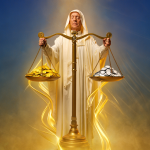
Doomium Hits Hard—Reality After All Your Delusions Collapse
Jul 28, 2025
There’s a peculiar silence that descends after the storm—a silence thick with the ashes of burned narratives and the radioactive hum of regret. Welcome to the world of Doomium, the psychological element that no one wants to own, yet everyone discovers eventually. In the aftermath of every speculative mania, when the dopamine has drained and the crowd’s euphoria has curdled into dread, Doomium reveals itself—not as a ticker, but as a force of nature, the fallout after hope’s half-life hits zero.
The Genesis of Mania: Building the Reactor
Markets, at their core, are not driven by numbers but by stories. In the age of meme stocks and digital echo chambers, those stories are weaponised—amped up by algorithms, influencers, and the intoxicating promise that this time, the old rules don’t apply. It always starts innocently enough: a few voices on a forum, a clever meme, a chart that’s gone parabolic. Each new convert adds fuel to the reactor, and the narrative heats up.
The crowd chants its mantras—“to the moon,” “diamond hands,” “hold the line.” Doubt is banished, replaced by groupthink and a sense of destiny. What could possibly go wrong when everyone believes, and disbelief itself is branded as heresy? The market ceases to be a marketplace and becomes a congregation. Every dip is not a warning but an invitation; every red candle an opportunity to prove your faith.
Within this reactor, Freud’s death drive begins its slow, invisible work. The hunger for ever-greater highs, the refusal to cash out, the subconscious courting of destruction—it’s all there, humming beneath the surface euphoria. The crowd is not merely seeking gains; it is flirting with annihilation, blind to the limits of its own story.
Denial: The Radioactive Glow Before the Meltdown
Mania does not last forever. The first cracks appear as whispers: a missed earnings report, a regulatory probe, a sudden reversal in sentiment. But denial is strong, and the crowd is invested—not just financially, but emotionally. To sell now would be to admit error, to break ranks, to expose oneself to ridicule. Instead, the narrative adapts. “The fundamentals haven’t changed.” “This is just FUD.” “Weak hands are being shaken out.”
Here, John Kenneth Galbraith’s cycle of euphoria and denial unfolds with tragic predictability. The warning signs are everywhere, but the crowd refuses to see. Reality is radioactive; no one wants to check the Geiger counter. Instead, they double down, rationalising every setback, finding new reasons to believe. The memes intensify, the language grows more militant, and the sense of invincibility hardens into dogma.
The psychological fallout is subtle at first, like the invisible spread of radiation. Confidence begins to mutate into anxiety, but the collective mask holds. Individual doubts are suppressed for the sake of group solidarity. The crowd clings tighter—not out of hope, but out of fear of what lies beyond the myth. The room grows hotter, the air more toxic, but no one dares to crack a window.
The Doomium Moment: Detonation and Fallout
It never arrives as a thunderclap. There is no grand announcement that the cycle is over. Instead, the Doomium moment is clinical, almost banal—a silent detonation that vaporizes the last molecules of delusion. The screen is a field of red; chatrooms fall silent, or turn bitter. The memes that once inspired become tombstones, marking the graves of vanished fortunes.
This is the moment Orwell warned of—the cold, unyielding arrival of fact. The slogans and fantasies collapse in a single, merciless instant. Reality does not negotiate, and it does not care about your conviction, your community, or your dreams. It simply asserts itself, stripping away every comforting illusion, every rationalization, every hope dressed in meme-fueled armor.
Freud would recognize the death drive in its purest form: the subconscious urge to self-destruct, finally fulfilled. The cycle has played out—euphoria, denial, reckoning—and the only thing left is the crater. Galbraith would nod, seeing in the wreckage a pattern as old as markets themselves: the bill for borrowed ecstasy always comes due, and it’s always larger than anyone imagined.
Living in the Fallout: The Psychological Crater
Doomium is not just an event; it’s an element with a half-life that lingers. In the aftermath, survivors sift through the ashes, trying to make sense of what happened. Some retreat into silence, licking their wounds. Others, unable to let go, begin the search for the next story, the next mania, the next fix of hope. The psychological fallout seeps into every corner: portfolios are ravaged, friendships are strained, and self-image is shattered.
For many, the hardest truth to accept is that there was never any grand conspiracy, no external enemy to blame. The market did not betray them; their own delusions did. The very narratives that once promised salvation became traps, cages forged from the collective need to believe. Orwell’s ghost lingers in every failed project and abandoned ticker—the moment when language stops disguising reality and starts exposing it.
Some will try to rationalize their losses, insisting they were “early” or “unlucky,” or blaming “manipulation” for outcomes that were, in fact, inevitable. But the real lesson of Doomium is that reality is not personal. It is indifferent, relentless, and undefeated. It rewards discipline and punishes fantasy, not out of malice, but because that is its nature.
The Return of the Crowd: Memory and Recurrence
One might hope that the experience of Doomium would inoculate the crowd against future manias. But markets have short memories, and the hunger for narrative is insatiable. As the crater cools and time passes, new stories begin to circulate. The platforms may change, the tickers may be different, but the underlying psychology is the same. Hope returns, disguised as innovation or disruption or “the next big thing.”
The cycle is not a straight line but a loop. Freud’s death drive, Galbraith’s cycle, Orwell’s reckoning—they all repeat, each time with a new generation of dreamers certain they are smarter, savvier, less susceptible to illusion. Each time, Doomium lurks in the background, waiting for the moment when delusion again outpaces reality.
The crowd is drawn back to the glow, moths to the radioactive flame. The memes spark to life once more, and the cycle of mania, denial, and collapse begins anew. This is the cruel genius of markets: they are not just mechanisms for allocating capital, but for recycling hope and despair, again and again.
The Anatomy of Doomium: A Closer Dissection
To truly understand Doomium, one must see it not as an anomaly, but as an inevitability—an emergent property of collective psychology and market structure. It is the byproduct of unchecked optimism, the residue left behind when stories are pushed past their breaking point.
Consider its symptoms:
- Cognitive Dissonance: As the cracks appear, traders experience an unbearable tension between what they want to believe and what their eyes reveal. The mind bends reality to fit the narrative, until it can bend no further.
- Social Reinforcement: The group amplifies the belief, creating a feedback loop that silences dissent. Validation comes not from evidence, but from the roar of the crowd.
- Narrative Inertia: Once a story takes hold, it becomes self-sustaining, resistant to facts, immune to criticism, feeding on every shred of ambiguity.
- The Reckoning: When the narrative finally collapses, the shock is not just financial but existential. The loss is not just financial, but also of meaning.
Doomium is the sum of these forces, the invisible hand that turns conviction into catastrophe. It is as old as the first market bubble, as new as the latest meme coin. Its periodic table is etched in the annals of every crash, every collapse, every collective hallucination.
Learning from the Fallout: Is There an Antidote?
If Doomium is inevitable, is there any defence? The thinkers fused into this portrait offer clues, if not comfort:
- Freud’s prescription: Recognise the death drive within—the urge to court risk, to push boundaries, to seek annihilation as much as profit. Acknowledge it, and you may learn to master it.
- Galbraith’s wisdom: Study history. Understand that every cycle feels unique but is, in fact, a rhyme of what came before. Scepticism is armour; humility is a shield.
- Orwell’s demand: Face reality without flinching. Strip away euphemism and wishful thinking. Call things by their true names, even when it hurts.
For the rare trader who internalizes these lessons, Doomium becomes a warning, not a fate. For most, it remains the element they never see coming—until it’s too late.
The Social Cost: Beyond the Portfolio
The fallout from Doomium is not confined to balance sheets. It radiates through communities, relationships, and even cultures. The collapse of shared narratives breeds cynicism and mistrust. The very platforms that once united the crowd in hope become battlegrounds for blame and recrimination.
In the shadows of every mania, there are stories of ruined friendships, broken families, and lost faith—not just in markets, but in the very idea of collective action. The crowd, once so powerful in its unity, fragments into isolated survivors, each wrestling with their version of regret.
And yet, the seeds of the next mania are sown in this very soil. Disillusionment fades, replaced by nostalgia for the thrill, the camaraderie, the sense of purpose. The cycle is self-perpetuating, and Doomium is the silent witness to every round.
The Irony of Doomium: The Element of Truth
In the end, Doomium is not the enemy. It is the element of truth, the final accounting when stories run out and only reality remains. It is the necessary counterpart to hope, the force that restores balance and clears the way for new beginnings.
Markets need Doomium as much as they need mania. Without it, the system would be a perpetual motion machine—impossible, unsustainable, doomed in a different sense. The pain of collapse is the price of renewal, the cost of learning, the bitter medicine that keeps the organism alive.
For those who survive, the lesson is indelible: reality is radioactive, unforgiving, and ultimately inescapable. The only way to thrive is to respect its power, to build narratives that can endure its scrutiny, to hold conviction lightly and doubt tightly.
Closing the Loop: The Return to Silence
After the fallout, there is silence. Not the silence of defeat, but the silence of clarity. The stories are gone, the crowd has dispersed, and the crater is all that remains. This is the true legacy of Doomium: not just a record of loss, but a clearing of the ground, a chance to begin again with eyes wide open.
And in that silence, the market waits, patient and indifferent, ready for the next cycle. The ticker will flicker, the memes will rise, and hope will return—always stronger than memory, always chasing the radioactive glow. But for those who have met Doomium and lived, there is a new wisdom: all stories end at the rock of reality, and the market is a mirror that never lies.
Doomium hits hard, but it also cleanses. It strips away illusion, leaving only the truth. And in the end, that is the only element with any lasting value.











Reinstituting Silver and Gold as “Money” Implemented by the States http://bit.ly/2fuNFkp
No consent from Congress is necessary.